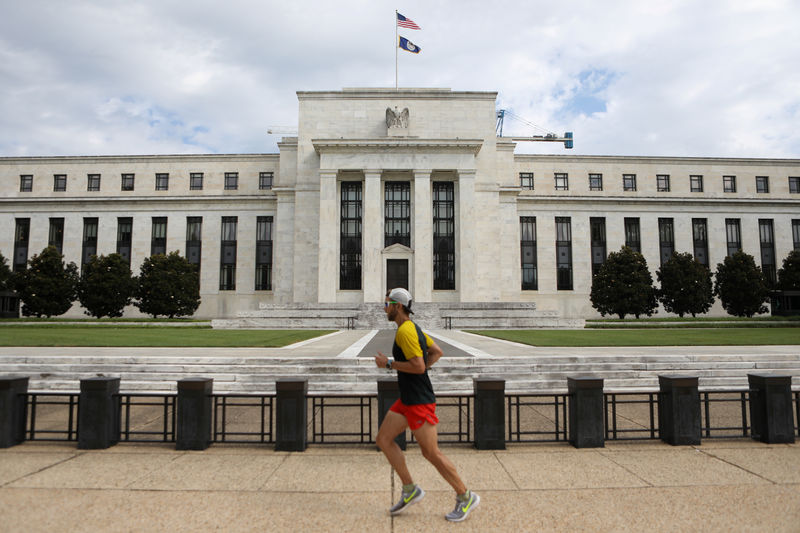(Bloomberg) -- Market participants leaped at the opportunity to lock in some of their end-of year funding needs at Monday’s Federal Reserve repurchase-agreement operation, the first to be conducted with a 2020 maturity.
Even with concerns about liquidity having eased since September’s upheaval, the Federal Reserve Bank of New York’s Monday operation to inject cash into the financial system for 42 days attracted $49 billion in bids -- almost twice the $25 billion available. This was the first of three term operations to provide funding past Dec. 31, with the bank planning another 42-day action on Dec. 2 and a 28-day offering on Dec. 9. The Fed currently plans to have a maximum size of $15 billion apiece for each of those operations.
“This was a very attractive 42-day period to get cheap funding, for sure,” said Thomas Simons, a money-market economist at Jefferies. It doesn’t indicate “near-term desperation for funding,” he said, but with the risk of year-end being “a little bit sketchy,” it presented “a very good opportunity.”
The central bank has been injecting liquidity into the funding markets since Sept. 17, when the rate on overnight general collateral repo jumped to 10% from around 2%. The Fed has also begun buying Treasury bills to add reserves into the system.
Even with the Fed’s commitment to continue providing liquidity to the financial system around year-end, the market is still showing some sign of concern. This is due to banks’ year-end balance-sheet constraints related to capital surcharges and other regulatory requirements.
The end of year repo rate in the market traded at 3.40% Monday, according to Curvature Securities. The current overnight rate for general collateral repo was close to 1.60%, ICAP (LON:NXGN) data show.
At Monday’s term operation, the Fed accepted $19.25 billion of Treasuries at a stopout rate of 1.60% and the weighted average rate was 1.643%. It accepted no agency debt, but took $5.75 billion of mortgage-backed debt at 1.62%, with a weighted average rate of 1.632%.
The Fed also conducted an overnight operation Monday, injecting $68.5 billion into the system. This, like other similar operations conducted recently, was less than the maximum offering size of $120 billion.
(Updates throughout.)
